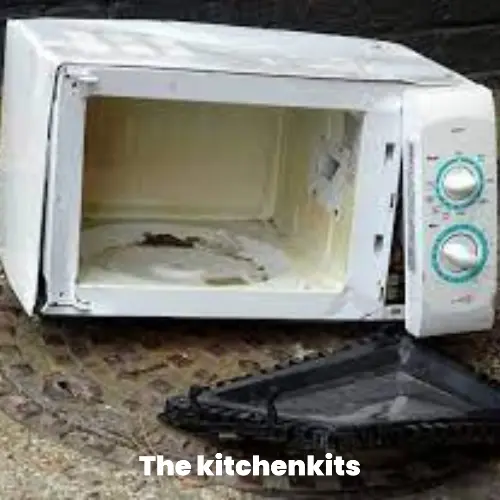Table of Contents
How much is a microwave worth in scrap metal:
The value of a microwave in scrap metal typically ranges from $5 to $10, depending on its weight and the current market conditions. However, the type of metal present in the microwave, as well as its condition, can also affect its value.
Copper is one of the most valuable metals found in microwaves due to its high conductivity and widespread use in various industries.
When selling a microwave for scrap, it is best to take it to a local scrapyard. Some scrap yards may not accept microwaves due to the potential electrical hazards associated with dismantling them, so it is important to call ahead to confirm if the facility is willing to accept your appliance. Online platforms such as eBay and Craigslist can also be used to sell microwaves for scrap, but it is important to exercise caution when dealing with potential buyers.
Recycling a microwave for its metal components not only helps the environment, but it can also be a way to earn some extra money. By properly disposing of a microwave, you are preventing potentially harmful chemicals from entering the environment and conserving valuable resources.
How to Scrap a Microwave: What Materials Are Recyclable and How to Get the Best Value:
If you have an old microwave lying around that you want to get rid of, you may be able to earn some extra cash by scrapping it. However, before you start taking it apart, it’s important to know what materials are recyclable and how to safely disassemble the appliance.
How to Disassemble a Microwave for Scrap:
If you’re ready to start scrapping your microwave, here are the steps you should follow:
Step 1: Collect the Required Tools
To disassemble a microwave, you’ll need a few basic tools, including a screwdriver, wire cutters, pliers, and a multimeter.
Step 2: Remove the Back Cover
To access the internal components of the microwave, you’ll need to remove the back cover. This is usually held in place by screws or clips.
Step 3: Discharge the Capacitor
Before you touch any of the components inside the microwave, you’ll need to discharge the capacitor. To do this, use a screwdriver with an insulated handle to shorten the two capacitor terminals together.
Step 4: Remove the Rear Panel
Once the capacitor has been discharged, you can remove the rear panel of the microwave to access the components inside.
Step 5: Remove Large Components
The larger components, such as the transformer and the magnetron, are usually held in place by screws or bolts. Remove these components carefully, and be sure to save any copper wiring that is attached to them.
Step 6: Retrieve Copper Parts
Finally, use wire cutters and pliers to remove any copper wiring or other valuable components from the microwave. These can be sold to a scrapyard for a small profit.
Potential Electrical Risks with Disassembling a Microwave:
Before you begin taking apart your microwave, it’s important to understand the potential electrical risks involved. Microwaves use high voltage and store electrical energy in capacitors, which can remain charged even after the appliance is unplugged. To avoid electrical shock, it’s important to discharge the capacitor before disassembling the microwave.
List of Components You Can Scrap from a Microwave:
Here are the components that you can scrap from a microwave:
- Copper wiring
- Magnetron
- Transformer
- Capacitor
- Circuit board
- Steel casing
- Aluminum
In conclusion, scrapping a microwave can be a great way to earn a little extra cash while also doing your part for the environment. Just be sure to take the proper safety precautions and follow the steps outlined above to ensure a successful and profitable scrap job.
Scrapping a Microwave Magnetron: Is It Possible?
Microwave magnetrons are high-voltage electrical components that generate the microwaves used to cook food in a microwave oven. Scrapping a microwave magnetron is possible, but it requires expertise in handling high-voltage electronics. It is not recommended for individuals who are not trained in electrical engineering.
Before attempting to scrap a magnetron, it is essential to understand that it contains dangerous levels of electrical energy, which can cause severe injury or even death. Therefore, it is crucial to take appropriate safety precautions, such as wearing protective gear and using proper tools, when dismantling the magnetron.
If you are skilled in electrical engineering and have the necessary tools, you can remove the magnetron from the microwave and recycle it for its valuable copper and aluminum components. However, it is recommended to seek professional help if you are unsure of how to proceed.
What kind of metal is in a magnetron:
A magnetron typically contains a cathode made of a material with a high electrons emissivity, such as tungsten or a tungsten-rhenium alloy.
The anode, or “plate,” of the magnetron is usually made of metal with a high melting point and good electrical conductivity, such as copper, silver, or gold.
In some cases, the anode may be made of a magnetic material, such as iron, to enhance the magnetic field within the magnetron. However, the metal that is primarily responsible for the magnetic field generated by the magnetron is typically not a separate component, but rather the current flowing through the cathode and anode.
Does a Microwave Have Copper?
Yes, a microwave contains copper. Copper is a highly conductive metal that is commonly used in electronics, including microwave ovens. The microwave’s electrical wiring, transformer, and magnetron all contain copper components.
If you want to recycle copper from a microwave, you can dismantle the unit and remove the copper components. However, as previously mentioned, it is essential to take appropriate safety precautions, such as wearing protective gear and using proper tools, when dismantling the microwave.
How to Repurpose Materials from a Microwave:
Microwaves contain various materials that can be repurposed for other uses. Here are a few ideas:
Transforming a Microwave into a Breadbox:
You can transform a microwave into a stylish breadbox by removing the door and the internal components. The microwave’s shell can then be painted or decorated to match your kitchen decor.
Repurposing Microwave Components for Furniture:
You can use the glass plate from a microwave as a tabletop or incorporate microwave transformer coils into a lamp or other furniture.
Using a Microwave to Display Rare Items:
If you have a collection of rare items, you can repurpose a microwave into a display case by removing the internal components and replacing them with shelves or hooks. The microwave’s transparent door allows for easy viewing of your collection.
Conclusion
Microwaves are complex electronic devices that contain valuable materials that can be repurposed. However, dismantling a microwave should only be done by individuals with the necessary expertise and safety equipment. If you are not skilled in electrical engineering, it is recommended to seek professional help.
FAQs
What materials can you scrap from a microwave?
Various materials can be salvaged from a microwave, including copper wire, transformers, and magnetron tube. Other parts, such as the steel casing and electronics, can also be sold for scrap.
Do all microwaves have magnets?
Yes, all microwave ovens have magnets. Specifically, they contain a component called a magnetron that uses magnetic fields to generate the microwaves that cook the food.
How much is a scrap microwave worth?
The value of a scrap microwave can vary depending on the current prices for different metals and the weight of the microwave. On average, a microwave can be worth anywhere from a few dollars to $10 or more.
Are there any potential safety risks when disassembling a microwave?
Yes, there are several potential safety risks when disassembling a microwave, including electric shock, exposure to hazardous materials, and injury from sharp objects. It is important to take appropriate precautions and follow safety guidelines when working with microwaves.

I’m Ian Welkins, a seasoned professional in the kitchen industry. My passion now drives me to provide invaluable insights into the world of top-notch kitchen products. With years of hands-on experience, I’m your go-to source for culinary excellence.











